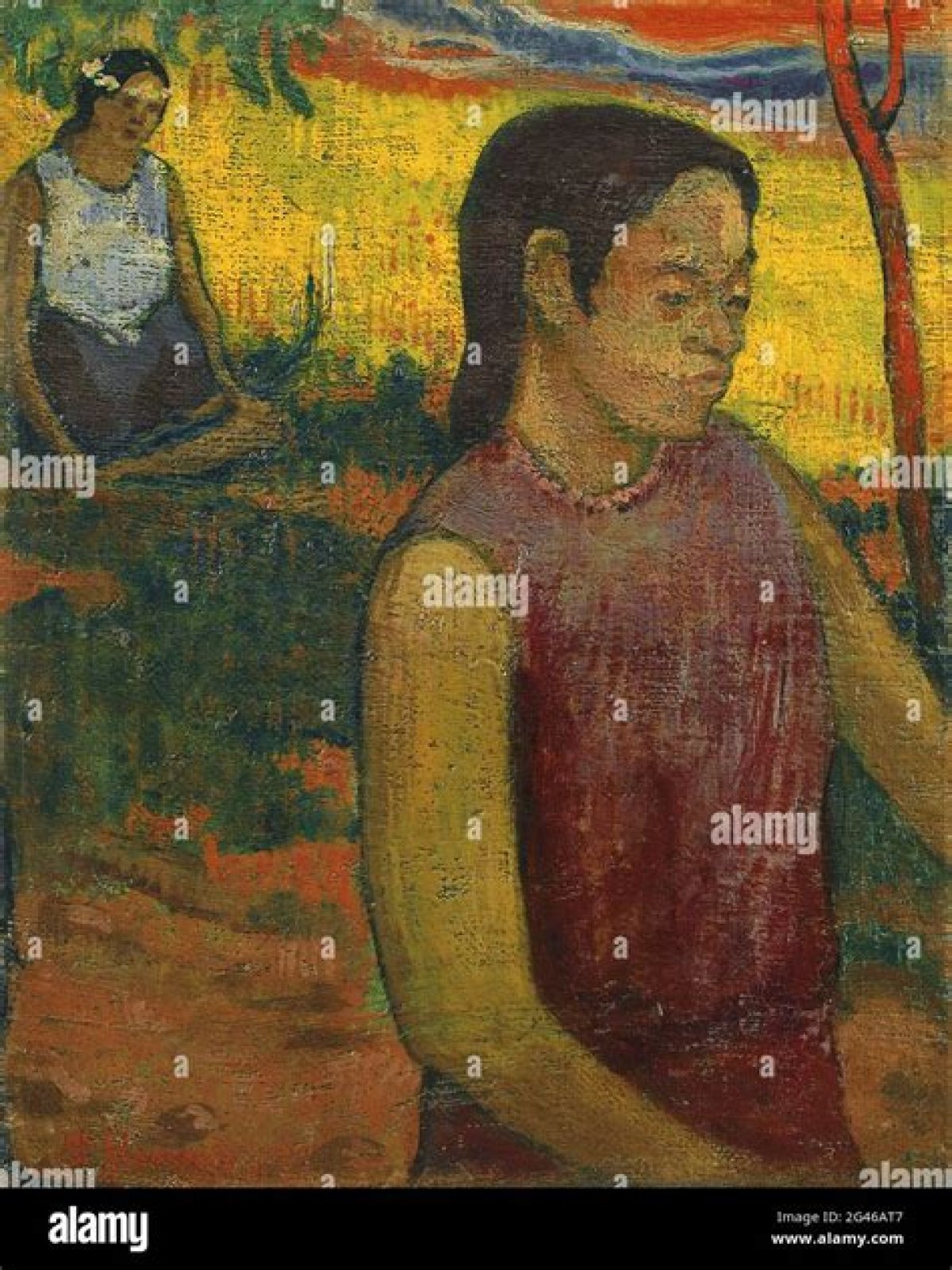When one thinks of the vibrant and exotic world of Paul Gauguin, it is impossible to overlook the captivating beauty of the "Gauguin Tahitiennes." This term refers to the stunning depictions of Tahitian women that the artist painted during his time in French Polynesia. These works not only showcase Gauguin's distinct style and color palette but also offer a glimpse into the lives and culture of the Tahitian people. The allure of these paintings continues to draw art lovers and historians alike, making them a vital part of Gauguin's legacy.
Gauguin's journey to Tahiti was not just an escape from European civilization but a quest for a deeper understanding of life and art. The artist sought to immerse himself in a world that he believed was more authentic and spiritually rich than the industrialized society he left behind. His interactions with the local women and their vibrant way of life significantly influenced his artistic vision, ultimately leading to the creation of his iconic Tahitian works.
Through the lens of the "Gauguin Tahitiennes," we can explore themes of femininity, beauty, and cultural identity. These paintings serve as a powerful commentary on the intersection of Western art and indigenous culture, raising questions about representation and appropriation. As we delve deeper into the world of Gauguin and his Tahitian muses, we uncover a complex narrative that challenges our perceptions of art history and cultural exchange.
What Inspired Gauguin to Paint the Tahitiennes?
Gauguin's fascination with Tahiti began long before his arrival in 1891. The artist was searching for a new source of inspiration that would liberate him from the constraints of European artistic conventions. He envisioned Tahiti as a paradise where he could explore themes of nature, spirituality, and the human experience. Several factors contributed to his inspiration:
- The desire for artistic freedom and self-expression.
- An escape from the industrialized and materialistic society of Europe.
- A deep appreciation for the natural beauty and simplicity of Tahitian life.
- The allure of portraying the local women, who embodied the exoticism he sought.
Who Were the Tahitian Women in Gauguin's Paintings?
The "Gauguin Tahitiennes" are not merely subjects in his artwork; they are representations of the rich cultural tapestry of Tahiti. Gauguin often painted specific women he encountered, each with her own story and significance. Some of the notable figures include:
- Teha'amana: Often referred to as "the young girl," she was one of Gauguin's most significant muses and later became his partner.
- Vahine no te Tiare: A stunning portrait that embodies Gauguin's style and fascination with Tahitian beauty.
- Fafine: Representing the ideal of Tahitian femininity, she appears in several of Gauguin's works.
What Techniques Did Gauguin Use in His Tahitian Art?
Gauguin's approach to painting was revolutionary for its time. He employed a variety of techniques that set his work apart from traditional European art:
- Bold Colors: Gauguin used vibrant colors to evoke emotions and create a sense of atmosphere.
- Simplified Forms: He often reduced figures to their essential shapes, emphasizing their spiritual essence.
- Symbolism: Many of his paintings contain symbols and motifs that reflect his philosophical beliefs and ideas about life.
What Legacy Did Gauguin Leave Behind?
The impact of Gauguin's work on the art world is profound and multifaceted. His paintings featuring the "Gauguin Tahitiennes" not only contributed to the Post-Impressionist movement but also paved the way for modern art. Some key aspects of his legacy include:
- Influencing artists such as Henri Matisse and Pablo Picasso, who admired his use of color and form.
- Challenging traditional representations of women in art, moving away from the idealized portrayals of the past.
- Raising awareness about the complexities of cultural representation and the ethics of art.
How Did Gauguin's Time in Tahiti Affect His Personal Life?
Gauguin's time in Tahiti was not without its challenges, both personally and artistically. His relationships with the local women were often tumultuous and marked by a struggle for understanding and acceptance. In addition to his romantic entanglements, Gauguin faced issues related to health, finances, and the consequences of colonialism. His personal experiences during this period shaped his work and contributed to the themes of isolation, longing, and spirituality found in his paintings.
What Controversies Surround Gauguin's Work and Legacy?
Despite his significant contributions to art, Gauguin's legacy is not without controversy. Critiques of his work often focus on the following aspects:
- The portrayal of Tahitian women and the potential objectification of their image.
- His complicated relationships with the local culture and the impact of colonialism.
- The ethical considerations of representing indigenous peoples in art.
What Can We Learn from the Gauguin Tahitiennes Today?
The "Gauguin Tahitiennes" serve as both a celebration of beauty and a reminder of the complexities of cultural exchange. As we examine these works, we are prompted to reflect on our perceptions of art, identity, and representation. In today's globalized world, Gauguin's legacy encourages us to approach art with a critical eye, recognizing the importance of context and the stories behind the images. By engaging with the works of Gauguin and understanding their implications, we can foster a more inclusive and respectful dialogue about art and culture.
| Personal Details | Biography |
|---|---|
| Name: | Paul Gauguin |
| Birth Date: | June 7, 1848 |
| Birth Place: | Paris, France |
| Death Date: | May 8, 1903 |
| Notable Works: | The Yellow Christ, Where Do We Come From? What Are We? Where Are We Going? |
| Nationality: | French |
| Art Movement: | Post-Impressionism |
Discovering The Allure Of Corte's: A Journey Through Style And EleganceExploring The Exciting World Of Jet MoviesUnveiling The Enigma Of Billie Eilosj: A Journey Through Music And Identity
